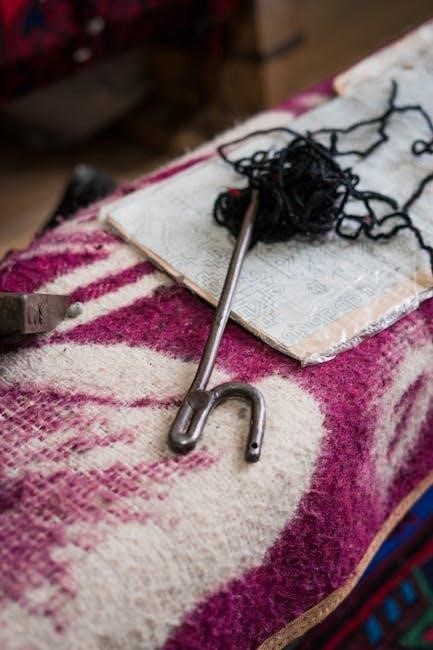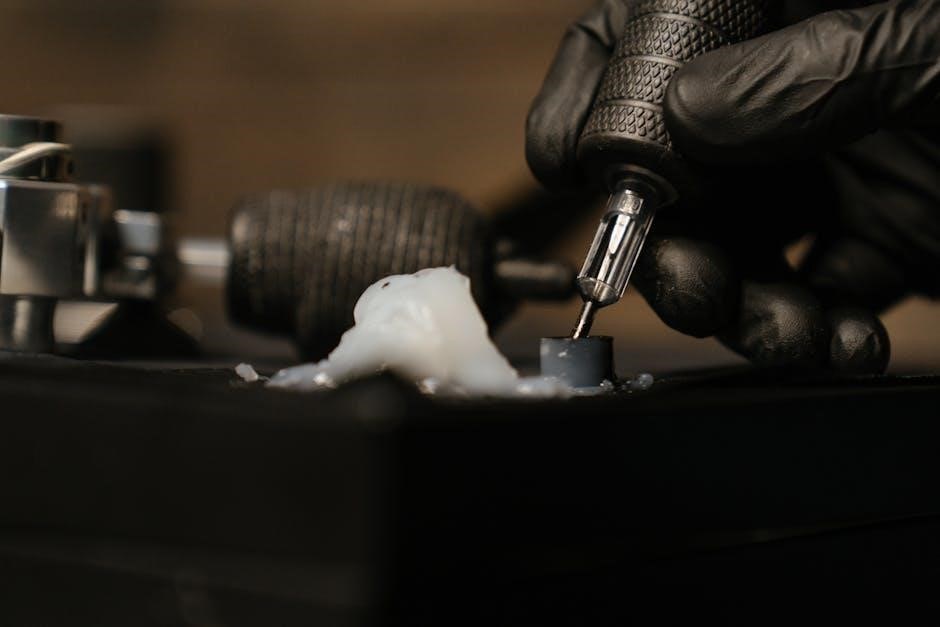Understanding Flokati Rug Lacing
Flokati rug lacing is a technique to join, repair, or customize these rugs. It involves using a needle and thread to weave sections together seamlessly. It is a blend of practicality and art to enhance your rugs.
What is a Flokati Rug Lacing Needle?
A Flokati rug lacing needle is a specialized tool designed for the unique task of joining or repairing sections of a Flokati rug. These rugs, known for their thick, woolly pile, require a robust and efficient method for mending or customizing. The lacing needle is typically longer and sturdier than a standard sewing needle, allowing it to pass through the dense wool fibers with ease.
The needle’s eye is also larger to accommodate thicker threads or cords, essential for creating a strong and durable seam. Its blunt tip is designed to navigate between the wool fibers without causing damage or snagging. The Flokati rug lacing needle becomes an indispensable tool.
Importance of the Right Needle in Rug Making
The right needle is paramount in rug making, especially when dealing with materials like the thick wool of a Flokati rug. A needle that is too thin may bend or break under the pressure of the dense fibers. A needle with a sharp point can damage the wool. The correct needle ensures neat and durable seams.
Using the appropriate needle size and type prevents unnecessary wear and tear on the rug. It reduces the risk of unraveling or weakening the integrity of the rug’s structure. The right needle makes the lacing process easier. It also makes it more efficient. Ultimately, it contributes to the longevity of the finished rug.

Preparing for Lacing
Before starting, gather all necessary materials, including the correct needle, durable thread, and scissors. Ensure a clean workspace and take safety precautions for a smooth, successful lacing experience.
Necessary Materials for Lacing
To begin your Flokati rug lacing project, assemble the essential tools. First, a specialized rug lacing needle is needed. Select a durable thread, preferably wool or a synthetic blend that matches your rug’s color and texture. A pair of sharp scissors will help in cutting the thread precisely.
A thimble is useful for pushing the needle through thick sections. Consider having rug lacing cord available in both cotton and linen. A ruler or measuring tape will aid in accurate measurements. Use safety gloves to protect your hands.
Good lighting is crucial for clear visibility. Finally, have a seam ripper on hand for correcting errors. These materials will ensure a successful and professional-looking finish for your Flokati rug project.
Safety Precautions Before Starting
Before starting your Flokati rug lacing project, prioritize safety. Ensure your workspace is well-lit and free from clutter to prevent accidents. Always use a thimble to protect your fingers when pushing the needle through thick rug sections. Wear safety gloves to avoid cuts and abrasions from the needle or rough rug fibers.
Handle scissors and cutting tools with care, keeping them out of reach of children and pets. If using any adhesives or cleaning solutions, ensure proper ventilation to avoid inhaling harmful fumes. Take breaks to prevent eye strain and fatigue, which can lead to mistakes or injuries.
Be mindful of your posture to avoid back pain. Keep a first aid kit nearby for minor injuries. By following these precautions, you can enjoy a safe and productive rug lacing experience.

Step-by-Step Lacing Guide
This guide provides detailed instructions for lacing Flokati rug sections. Follow each step carefully to achieve a seamless and durable finish. With practice, you will master the art of rug lacing.
Threading the Needle
Threading the lacing needle is a crucial first step in the Flokati rug lacing process. Begin by selecting a thread that matches the rug’s material and color for a seamless finish. Cut a length of thread, typically three to four times the length of the area you intend to lace, to ensure you have enough to work with.
Next, moisten the end of the thread to make it easier to pass through the eye of the needle. Hold the needle firmly and carefully guide the moistened thread through the eye. Once the thread is through, pull it a few inches to secure it.
For added security, you can tie a small knot at the end of the thread, preventing it from slipping out during the lacing process. Ensure the knot is not too large, as it could create bulk and be visible in the finished rug. With the needle threaded and secured, you’re now ready to begin preparing your Flokati rug sections for lacing.
Preparing Flokati Rug Sections
Before you begin lacing, preparing the Flokati rug sections is essential for a neat and durable finish. Start by laying the rug flat and brushing out any tangled fibers or debris. This ensures the edges are clean and even, making them easier to align. If you’re joining two separate pieces, ensure they are of similar thickness and texture for a seamless look;
Carefully align the sections you want to lace together, ensuring the edges meet precisely. Use clamps or pins to hold the sections in place temporarily, preventing them from shifting during the lacing process. This is especially important for larger rugs or intricate designs.
If you need to trim any excess material, use sharp scissors or a rotary cutter to create a clean, straight edge. Avoid jagged or uneven cuts, as they can compromise the integrity of the lacing. With the sections aligned and secured, you’re now ready to begin the lacing process.
How to Measure and Cut Rug Sections
Accurate measurement and cutting are crucial when preparing Flokati rug sections for lacing. Begin by determining the desired dimensions of your rug or the area you need to repair. Use a measuring tape to mark the cutting lines on the rug’s backing, ensuring precise measurements to avoid any discrepancies.
When cutting, use a sharp utility knife or fabric scissors to create clean, straight lines. For thicker sections, consider using a rotary cutter for smoother cuts. Always cut on a flat, stable surface to maintain accuracy and prevent the rug from shifting during the process. If you’re working with a damaged rug, carefully remove any frayed or loose fibers before cutting.
To ensure a seamless join, cut the sections slightly larger than needed; After lacing, you can trim any excess material for a perfect fit. This approach allows for minor adjustments and ensures a professional-looking finish. Take your time and double-check your measurements before cutting to minimize errors.
Tips for Aligning Rug Sections
Proper alignment is key to achieving a seamless and professional-looking lacing project for your Flokati rug. Start by laying the rug sections on a flat surface. Ensure the edges you intend to lace together are clean and free of loose fibers, as these can interfere with accurate alignment.
Use clamps or pins to temporarily secure the sections in place. This prevents shifting during the lacing process and ensures a consistent seam. Carefully match the patterns or textures of the rug to create a visually appealing join. If the sections have different pile heights, consider trimming the higher section slightly to create a smoother transition.
Regularly check the alignment as you work, making adjustments as needed. A well-aligned seam will not only look better but also provide greater durability. For larger projects, consider using a long ruler or straight edge to maintain a consistent line. Taking the time to properly align your rug sections will result in a professional and long-lasting repair or customization.
Lacing Flokati Rug Sections
Lacing Flokati rug sections involves carefully joining the prepared edges using a needle and thread. Begin by selecting a strong, durable thread that matches the rug’s color and fiber. Thread the needle and knot the end securely. Start at one end of the seam, inserting the needle through both sections of the rug.
Maintain a consistent stitch length and spacing for a uniform appearance. Use a thimble to protect your fingers when pushing the needle through thick wool sections. Pull the thread tight after each stitch, but avoid over-tightening, which can distort the rug. As you lace, ensure the edges remain aligned to prevent gaps or overlaps.
For added strength, consider using a backstitch or a double-running stitch. Periodically check the lacing on the underside of the rug to ensure it is secure and even. Once you reach the end of the seam, tie off the thread with a secure knot and trim any excess. With careful attention to detail, you can create a seamless and durable join between Flokati rug sections.
Starting the Lacing Project
Before diving into the lacing process, ensure you have a well-lit and comfortable workspace. Gather all necessary materials: the prepared Flokati rug sections, a suitable lacing needle, durable thread matching the rug’s color, scissors, and a thimble for protection. Begin by laying the rug sections flat, aligning the edges to be joined. Secure the sections with pins or clips to prevent shifting during lacing.
Thread the needle with a generous length of thread, knotting one end securely. Start lacing from the back of the rug, concealing the knot between the rug fibers. Insert the needle through both layers of the rug at the starting point. Pull the thread through, leaving a small tail to be woven in later. Ensure your first stitch is firm and secure, setting the foundation for a seamless join.
Maintain consistent tension to avoid puckering or distortion. With your materials prepared and the initial stitch in place, you’re ready to proceed with the lacing process, transforming individual sections into a cohesive and beautiful Flokati rug.
Techniques for Tight and Even Lacing
Achieving a tight and even lace is crucial for a durable and aesthetically pleasing result. Employ the “baseball stitch” or “blanket stitch” for a secure hold. Insert the needle through both rug sections, pulling the thread taut to create a firm connection. Maintain consistent stitch length and spacing, typically 1/2 to 3/4 inches apart, to ensure uniform tension. Use a thimble to protect your fingers when pushing the needle through thick wool sections.
Periodically check the lacing from the front side of the rug to ensure the stitches are invisible or minimally visible. If the thread becomes twisted, let the needle hang freely to unwind it. Avoid pulling the thread too tightly, as this can cause the rug edges to pucker. Gently stretch the rug sections as you lace to prevent bunching. Backstitch occasionally to reinforce the seam.
When changing thread, overlap the old and new threads by several stitches to secure them. By following these techniques, you can achieve a professional finish, ensuring your Flokati rug sections are seamlessly joined with a tight and even lace.
Finishing the Lacing Project

Once you’ve completed lacing all sections of your Flokati rug, it’s time to secure the thread. To do this, weave the needle back through the last few stitches on the rug’s underside. This creates a knot that is concealed within the rug fibers. Gently pull the thread and trim it close to the rug’s surface, ensuring it doesn’t unravel.
Next, inspect the entire lacing line for any loose threads or uneven stitches. Use the needle to tuck any stray ends back into the rug. Gently stretch and manipulate the laced seam to ensure it lies flat and blends seamlessly with the rest of the rug.
Finally, give the rug a good shake to remove any loose fibers or debris accumulated during the lacing process. If necessary, vacuum the rug using a low-power setting and a brush attachment to fluff the wool fibers. With these finishing touches, your Flokati rug lacing project will look professional and be ready for use.

Troubleshooting
Even with careful preparation, rug lacing can present challenges. Common issues include uneven stitches, loose threads, or thread breakage. These issues are often solved with patience, practice, and the right techniques.
Dealing with Common Rug Lacing Issues
When lacing flokati rugs, several common issues can arise, but don’t be discouraged! One frequent problem is uneven stitch spacing, leading to an unprofessional look. Consistent tension is key to achieving evenly spaced stitches. If your thread keeps breaking, consider using a stronger thread designed for rug making and ensure your needle isn’t too small for the thread.
Another issue is the rug sections not aligning correctly. Always double-check the alignment before you start lacing and use pins to secure the sections in place. If you notice puckering, try gently stretching the rug while lacing. For tough spots, use a thimble to push the needle through thick areas. Remember, patience and a steady hand can overcome most rug lacing challenges. Don’t hesitate to undo and redo sections if needed to ensure a flawless finish for your flokati rug.






